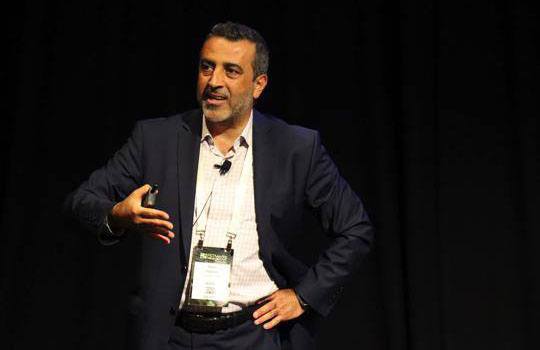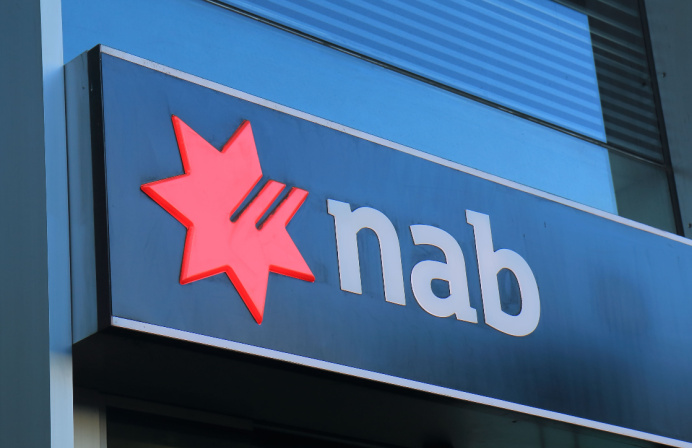
Open APIs are being widely adopted by banks and financial services providers as a convenient means to diversify and augment services offerings. For insurers, however, facing the twin-headed pressures of diminishing margins and the steady flight of millennial customers, could a fully open architecture help build their future bridge to salvation?
Sami Yalavac, CIO of the Australian health insurance giant Bupa, has much to lament about the state of the local health insurance industry. From a byzantine healthcare network hobbled by “fragmented” medical diagnostics system (with, he frets, “some of the longest wait times in the world for identifying diagnoses”), to cost-sensitive millennials abandoning their policies in droves, Australia’s health insurers indeed face an uncertain future. Yet, ever the optimist, Yalavac still sees a promising road ahead for insurers willing to embrace wholesale technological transformation (and those that extend a welcome hand to partners).
Speaking at the Future of Insurance conference in Sydney last Thursday, Yalavac urged a radical change in insurers’ value proposition – one firmly rooted in their digital offering to customers. Indeed, a battle on price is unlikely to yield anything more than pyrrhic victory, as high costs and latent inefficiencies within Australia’s healthcare system relegate health insurance to “a very low margin business”.
“In insurance, every single dollar you pay, 87 cents of that goes to claims – that means hospitals, doctors, [patient] tests etcetera. The real cost [of insurance] is driven with health costs themselves rather than insurance,” Yalavac said.
“Without fixing the problems in the health system,” he frets, “we can’t really fix… the cost aspect of insurance.”
Lacking effective decision-making power to shape Australia’s government-dominated healthcare system, insurers must seek ways to innovate within to stay relevant beyond.
Enter Bupa’s aggressive digital transformation play – one, Yalavac contends, is firmly rooted in customer outcomes, not corporate deliverables.
“We very specifically call it ‘customer transformation’ rather than digital transformation. Most companies make this mistake and forget what, exactly, they’re doing and why they’re doing it.”
For Bupa, this customer transformation program is shaped by four key principles: embracing the best customer service models from beyond insurance (“Why can’t I check in to the hospital as easily as I can check in with Qantas?”); adopting a preventative healthcare model that benefits customers and insurers alike (“Because fewer claims means your premium will be less and everyone wins.”); simplifying insurance product offerings (“One of,” Yalavac contends, “the hardest products to understand why you’re buying it and what you exactly need.”); and a customer co-design philosophy that firmly shapes product and service development.
“We are starting to shape our program based on a very clear customer outcome.”
For Yalavac, the ultimate test of success in transformation will be whether customers say ‘Yes, this sorts out my problem’ rather than in staff praising themselves on delivering ‘a new CRM (customer relationship management) solution’.
“Again, it’s about not losing focus on the customer, but still taking this journey through our technology [platforms].”
Launching Apollo
Of course, the ability to deliver these outcomes, Yalavac contends, is predicated on understanding what customers want and need, which rests in large part in insurers’ vast repository of data assets.
This, at its heart, requires CRM that can deliver rich customer insights – a platform, Yalavac believes, that insurers must roll out across all service channels in order to gain true value from it.
“You need to have a really good CRM solution regardless of the channel, whether that’s digital, phone, or retail centre,” he said.
“You should be able to capture every single interaction with your customer, to know what they are going through and what they’re after, what their good experiences are and their bad, so that you can manage this relationship better.”
This was the basis of Bupa’s own Apollo CRM program, among the most advanced customer interaction analysis platforms within Australia’s insurance industry.
Yet, while Apollo forms the basis of Bupa’s customer engagement strategy, it is but one half of what is in essence “a whole of supply chain solution”.
Indeed, the CRM platform is effectively paired with a separate, though interconnected, ‘provider platform’ that interacts directly with health services.
“The provider platform is the other side of the equation: it’s the hospitals, the doctors, and how we effectively interact and transact with them,” Yalavac said.
Through the provider platform, Bupa can interact with healthcare providers on behalf of customers, confirming, for example, out of pocket payments or even the quality of treatment that might be expected from a particular hospital or doctor.
This also includes a recently acquired service that gives customers the ability to rate doctors and healthcare providers, and to see other Bupa customers’ experiences within certain hospitals or doctors, helping to “contribute to a conversation that… guides our customers”.
Getting personal
Customer personalisation has been a longstanding goal for insurers. The ability to tailor health plans and, indeed, health premiums to unique customer demands could offer a major shot in the arm for an industry battling to stay relevant with its next generation of customers.
Yet for true customer personalisation to work, Yalavac stressed, you need to invest in your data.
Using the analogy of a Ferrari “without fuel”, any investment in a customer analysis engine is only as good as the fuel that goes into it; without the right fuel, you’ll “go nowhere”.
Bupa has already put itself firmly in the seat of the car, building its own personalisation engine fed by an AI-backed big data analytics platform.
This meant drawing the “right data sources through a big data platform” and then utilising artificial intelligence to first identify valuable datasets and then transform these into actionable customer insights – a vast improvement on the existing analytics engine, Yalavac notes.
“When initial claims system was designed for Bupa many many years ago, it was only capturing claims data, but not the rejected claims, because rejected claims are not [considered] a transaction… we missed the game not capturing the rejected claims. So what’s the big deal? It meant that we weren’t learning from the many years of experiences that our customers going through and the sort of things that our customers actually need. But we can serve them through our product.”
The ability to first capture and then effectively analyse this data gave Bupa invaluable insight into their customers and, almost immediately, allowed them to tailor product features.
“We‘re now able to go to customers proactively and really guide them – ‘This is the right product, and this is the right feature for you’. Without those insights, with our five million customers, we wouldn’t be able to do this manually. It’s impossible.”
“Getting all this correlation, all these rules, requires a really big, really rich logic; every day we are learning through this new data as well as adding new rules on that.”
“We all look for silver bullets in our data. AI analytics is the game where you will start to capture that.”
“This is a personalisation story that will give us significant opportunities.”
Bupa has turned their AI analytics engine loose on its customer call centre, deploying natural language AI to better understand the tone, intonation, and emotion of customers.
“We understood that customers say this but actually mean that, because they don’t use the same language used in insurance, they are using their own understanding, their own words.”
“This eventually turned to a big database for us. We analysed two million calls and realised that 45 per cent of the calls were going in the wrong direction, like a ping pong going through the multiple courses (the product team, claims team, the hospital claims retention etc.). That is almost half of our callers losing time.
“We realised we set up our call centre sales based on our own functions, not the customers’.”
This led to Bupa effectively restructuring their entire call centre processes to six core areas of concern.
“When you now reach out one of these areas you can get all your answers at one go. And also the system intelligently identifies ‘when you say this, you actually mean this’ and forwarding you through to that area, or if there an inexperienced contact centre agent who doesn’t realise it’s time to escalate, the system then warns them to escalate the call to a more senior person.”
This restructure led to a significant increase in efficiency, Yalavac said, with a 20 per cent reduction in call transfers.
“So it’s a win for customers: less costs for them, less time, and it’s been a win for us as well. It’s just another example of using technology to get a valuable outcome.”
Embracing openness
Corporate partnerships have long proved a fecundity of innovation and out-of-the-box thinking, particularly for a traditional industry like insurance. Yet they could also prove vital to the continuing relevance and long-term survival of insurers and, indeed, the wider financial services sector.
APIs effectively serve as the digital gateways of today’s services industries, allowing companies to leverage the digital resources and platforms of their partners.
In an insurer’s case, this might mean connecting customers’ health and diet plan data from a fitness centres or healthcare providers service, and using this to offer specialised preventative health services or even a reduction in premiums.
“In order to do business in today’s world, you need a very strong API layer,” Yalavac declares.
Open APIs have indeed promised much in diversifying the financial industry’s service and product offerings, opening traditional financial businesses to the unconventional (and often more experimental) innovators beyond the sector.
“API is the language and integration layer you need to connect with the rest of the world,” he said.
For Yalavac, moreover, APIs also serve as the proverbial bridge to overcome one of the insurance industry’s longstanding hurdles: legacy.
“We all have legacies. They’re not going anywhere soon. Through Open APIs, we have a way to export those services to connect with the rest of the world.”
However, for Yalavac, Open APIs are less about churning out a few useful customer services than about re-architecting one’s business towards an open framework.
“We have to prepare ourselves for the future with a real open architecture to able to connect with partners. API is just one of the ways.”
“If you talk about existing in the future, because we know that many Fortune 500 companies… in the next 10 years, 40 per cent of them will disappear. And we don’t want to be one of them in the Australian context.”
“For your own organisation, you need to find what other connection points and integration points you need to work with the rest of the world.”
“Agility is extremely important. It’s about how, in an agile way, you can collaborate with someone you may find you desperately need to collaborate with to serve customers.”
“In terms of the future of the business, no one can buy themselves everything.”
For Yalavac, true end-to-end service delivery is about acknowledging that no business is an island.
“While Bupa has a wide range of services, especially in health, we can’t do everything — we can’t run fitness centres, we can’t run healthy food options, but we can collaborate with [these businesses].”
“We’ve started trialling an app now and through that app we are partnering with fitness centres and health food providers, for example, offering millennials a new subscription-based model.”
“If you come to this model, you will get reduced rates for your fitness, reduced rates for your food, for example. We’re just exploring it and as we see more success in it we’ll make the chain bigger, so more and more companies can join the service, meaning more value for the customers.”
Ultimately, it is about reorienting Bupa’s business model to serve customers as an agent of preventative health – an arrangement that benefits all.
“That’s the real game changer. If you can make people healthier, there’s less pressure on the system which everyone is in.”
Further, it may serve to future-proof insurance from an increasingly challenging operating environment, and ensure continued relevance to future customers.
“If insurers do not exist in the future, this is your sort of saving route that provides you with a really solid business and a solid revenue model,” Yalavac said.
“To do that means you need to be able to connect with the rest of the world. All the other partners, all the other solutions, you will need to do this together.”





